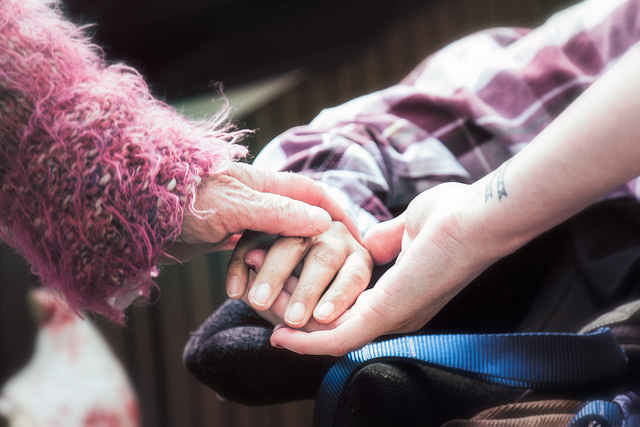Most deaths by suicide are among people of working age. Suicide is the leading cause of death for males aged 25–44 years and females aged 25–34 years. The proportion of suicides that are work-related is unclear. One Australian study found that 17% of suicides in Victoria from 2000–2007 were work-related. Applying this estimate to deaths across Australia, approximately 3,800 suicides over the decade to 2011 may be work-related.
Adults spend about a third of their waking hours at work. The workplace provides a unique opportunity to provide key health information and intervention. Suicide Prevention Australia (SPA) sees the workplace as playing a vital role in the creation of a suicide safe community.
The World Health Organization suggests worker suicide is a result of a complex interaction between individual vulnerabilities and work-related environmental factors that trigger stress reactions and contribute to poor mental well-being. Employers have a legal responsibility to provide a safe and healthy workplace, including managing psychosocial stressors.
Suicide Prevention Australia believes urgent action is required to address a range of systemic issues including managing unemployment, workers compensation and coronial processes. In addition, we call on organizations of all sizes to implement workplace policies and programs that promote a mentally healthy workforce and prevent suicide behaviors.
Understanding of the cost of workplace stress is continuously building and includes productivity losses because of "presenteeism" (the act of coming to work despite sickness, physical or mental) and absenteeism as well as workers' compensation claims. No detailed and independent costing exists on the cost of suicide and suicidal behavior to the Australian economy.
A plausible estimate was calculated to be $17.5 billion per year, including productivity costs. Death claims paid out by Group Life Insurers in Superannuation for suicide exceeds $100 million per year. Monetary value aside, suicide cuts lives short and leaves scars.
Suicide is mostly preventable, yet significant gaps exist in our understanding of the relationship between work and suicide, limiting prevention efforts. SPA has reviewed the existing evidence, and we believe urgent action is required to address a range of systemic issues including managing unemployment, workers' compensation and coronial processes. In addition, we call on organizations of all sizes to implement workplace policies and programs that promote a mentally healthy workforce and prevent suicide behaviors.
We ask employers to draw on the information provided in this document and call on them to:
- Promote a workplace culture that is inclusive, de-stigmatizes mental health problems and encourages help-seeking. Sharing stories about personal experiences with suicide and mental health problems can be a powerful way to address stigma. In appropriate settings and with support and informed consent of all parties involved, leaders are encouraged to share their own stories, highlighting positive coping strategies and sources of help.
- Prioritize psychosocial workplace safety. This includes identifying ways to reduce work-related stressors.
- Understand and value the person as a human being rather than a resource. This includes understanding the interactions between what happens within the workplace and other aspects of life including family, relationships, cultural background, health, etc. This will help facilitate an understanding of the meaning of work for people and the impact of stress, loss or failure of work on their lives.
- Promote mental health and suicide awareness within the workplace, paired with clear and communicated pathways to support for those in need.
- Establish mechanisms for the recognition and early detection of mental health and emotional difficulties in the workplace.
- Provide employees with access to appropriate self-help or professional interventions and treatment, for example via employee assistance programs linked to external community health resources. Pathways to care should be well promoted within the workplace, making sure employees feel encouraged to draw on these supports and understand the confidential nature of services. This will help overcome potential fear of breach of privacy.
- Frame suicide prevention programs in a manner that respects the cultural backgrounds and needs of the target audience, taking into account factors such as cultural and linguistic diversity, indigenous status and diverse sexualities and genders.
- Be prepared for suicide to touch the lives of your employees and to respond appropriately. Lived experience of suicide can include having thoughts about taking one's own life, making a suicide attempt, caring for someone who is suicidal, being bereaved by suicide, witnessing a suicide or being exposed to suicide in some other way. These experiences will take on different meaning and importance for every person and can have lasting impacts.
To assist individual employers to achieve this, we ask that industry and employer groups:
- Establish relationships with key suicide prevention and mental health organizations.
- Develop industrywide guidelines for suicide prevention.
- Invest in the development of multifaceted suicide prevention programs tailored for the industry. This is especially urgent for industries characterized by relatively ready access to suicide means, elevated risk of suicide or a high proportion of male workers.
- Promote policies and practices that encourage employment, as this will give more people protection against one of the more significant risk factors for suicide.
- Invest in both labor market programs and suicide prevention programs (including mental health promotion) during times of economic downturn.
- Provide access to counselling services (via employment pathway services) for individuals unemployed for more than four weeks.
- Provide suicide intervention skills training for front-line staff working with the long- term unemployed.
- Fund research into the relationship between work and suicide to inform suicide prevention activities.
- Review the role of the workers' compensation system in suicide prevention, minimizing harm and maximizing opportunities for intervention with those vulnerable to suicide. To achieve this, workers' compensation claims databases require improvement, and research is required to better understand the relationship between workers' compensation and suicide.
- Give coroners adequate resources to ensure that coronial investigations include the role of work in suicide deaths.
- Develop guidelines for suicide prevention in line with the Australian Work Health and Safety Strategy 2012-2022.
- The proposed harmonized workplace health and safety regime increases focus on duty of care including mental health. We call on state and territory governments to implement recommendations under the proposed regime.
- Invest in mental health and suicide prevention in the workplace.








